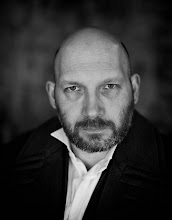
The Dream of X by William Hope Hodgson
In terms of apocalyptic vision, there are few novels that can match the sheer imaginative and doom laden power of William Hope Hodgson’s 1912 novel The Night Land.
Set in a far flung future where the sun has ceased to shine and the last few million humans are huddled in two vast pyramids – The Great and Lesser Redoubts – it is a world where, to paraphrase Hodgson, olden sciences have disturbed the Outward Powers and allowed grotesque and horrible, Creatures, Monsters and Ab-Humans to either materialize or develop upon the sunless world and for “certain dreadful Forces to have power to affect the life of the human spirit.”
Briefly, the plot of The Night Land concerns an unnamed narrator who, in his dreams, travels from his present into the far flung future in search of his long-lost love who, like him, has been reincarnated at the end of the world. When the Lesser Redoubt is overwhelmed by dreadful forces he elects to travel from the Great to the Lesser Redoubt to rescue her. As a plot devise this allows Hodgson to explore his strange new world in detail and bring its horrors ever closer to the fore in much the same way that they draw ever closer to the Great Redoubt.
In it depiction of a hostile and uncanny earth, The Night Land has few peers amongst dying earth fiction - here there is none of the baroque romanticism of Jack Vance or the sense of the end of the world as playground in Moorcock’s Dancers at End of Time sequence - only Clark Ashton Smith’s Zothique stories come close to matching Hodgson’s bleak vision of Earth’s final years. But even Smith’s macabre sensibility hardly matches the overwhelming horrors of Hodgson’s Night Land.
Here the great creatures of the earth – the Watchers – are not gods but malevolent, barely understood, entities, and even the lesser creatures The Silent Ones, Night Hounds and Beast Men are at best ambivalent and more usually downright hostile to the inhabitants of the Redoubts, their destructive force only kept in check by an ever dwindling Earth Current.
But…
For all its brilliance The Night Land is not an easy novel. Hodgson’s chosen style, a sort of cod gothic, is often impenetrable and at its heart the novel has a cloying sentimentality that, in its own way, is as horrific (albeit unintentionally) as any of Hodgson’s other concepts.
“And as the Dead went upwards, there was a very great Silence over all the miles of the Country of Silence. But in a little while there came from afar off, a sound as of a wind wailing; and it came onwards out of the distance, and passed over the Hills of the Babes, which were a great way off. And so came anigh to the place where I stood. Even as the blowing of a sorrowful wind did it come; and I knew that all the great multitudes did sing quietly; and the singing passed onwards, and left behind it an utter silence; even as the wind doth rustle the corn, and pass onwards, and all fall to a greater seeming quietness than before.”
The Night Land is a long novel – nearly 200,000 words long, in fact – and is an often frustrating read. Whereas the gothic sensibilities and wordiness of, say, Charles Maturin’s Melmoth the Wanderer or Matthew Lewis’ The Monk, are fundamental to the novels themselves, the prose style of The Night Land merely serves to create a barrier between novel and reader.
A masterpiece, certainly, but a deeply and critically flawed one.
However, as chance would have it, there is another more accessible version of The Night Land which retains all its power and startling imagery but is, quite simply, easier to read.
When The Night Land was first published a British writer could not be copyrighted in the United States unless typeset and printing were performed by an American shop. In order to secure his own copyright, Hodgson rewrote, revised and reorganised his massive opus into a much condensed form, cutting the original from nearly 200,000 to some 20.000 words, and had the edition published in the USA under the title of The Dream of X. (or, more accurately, as part of a small anthology entitled Poems & The Dream of X which contained a number of Hodgson’s poems and a further novella, Mutiny).
The restructured novel - purported to be the rescued fragments of a manuscript recovered from the ashes of a fire in the narrator’s house - is a no less remarkable piece of work than The Night Land itself, stripping the story back to its bare bones and allowing its imaginative power to shine.
Although the language is still dense and sometimes difficult, it nonetheless seems more appropriate here, almost as if cod gothic has become the language of the future and the horrors of the Night Land itself are more immediate when the novel has been shorn of its more meandering aspects. So what had once been a flawed masterpiece suddenly became a condensed masterpiece that retained its original power but now welcomed readers in rather than holding them at arms length.
Rediscovered and republished in 1977 with an introduction by the legendary Sam Sam Moskowitz and with superb illustrations by Stephen Fabian (which are almost worth the price of the book in themselves) The Dream of X is something of a lost classic but one that deserves to sit on the shelves of any SF and F aficionado.
If you have the time, patience and stamina, I would heartily recommend The Night Land in all its flawed glory (sure, it’s a difficult book but one that rewards perseverance) however, if you simply want an imaginative tour-de-force then you should make The Dream of X your next fictional stop.








